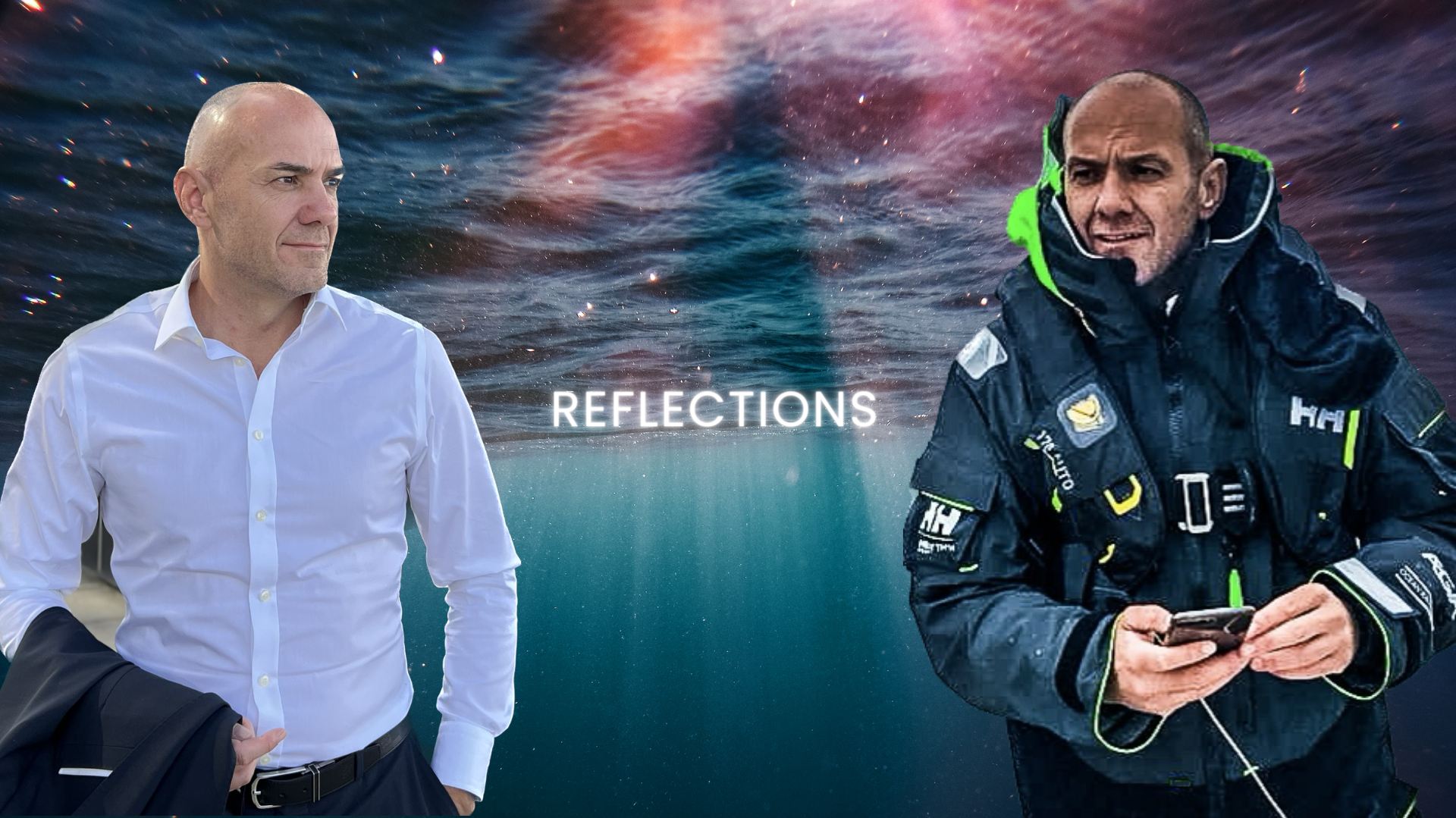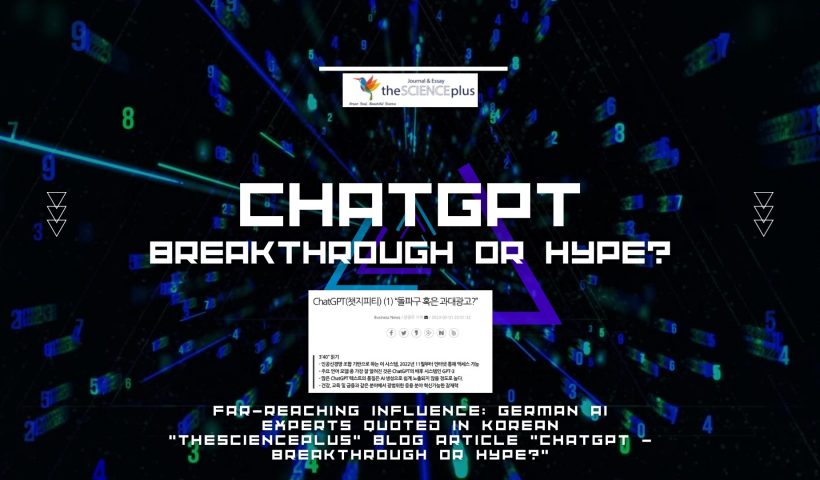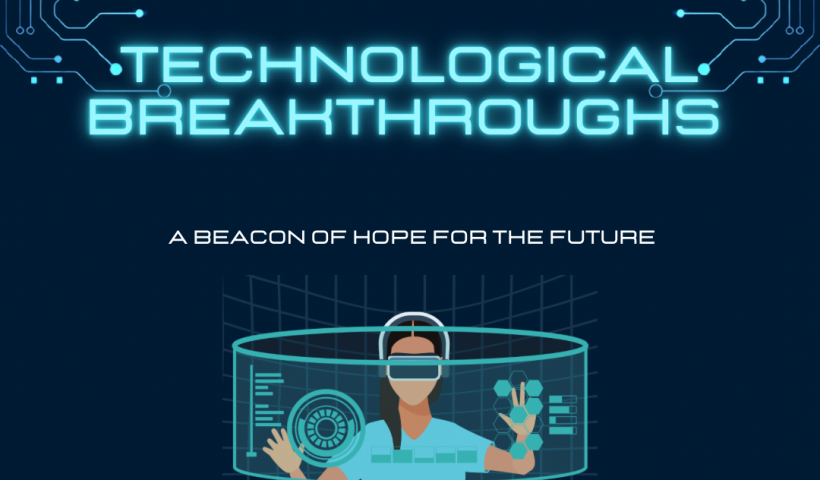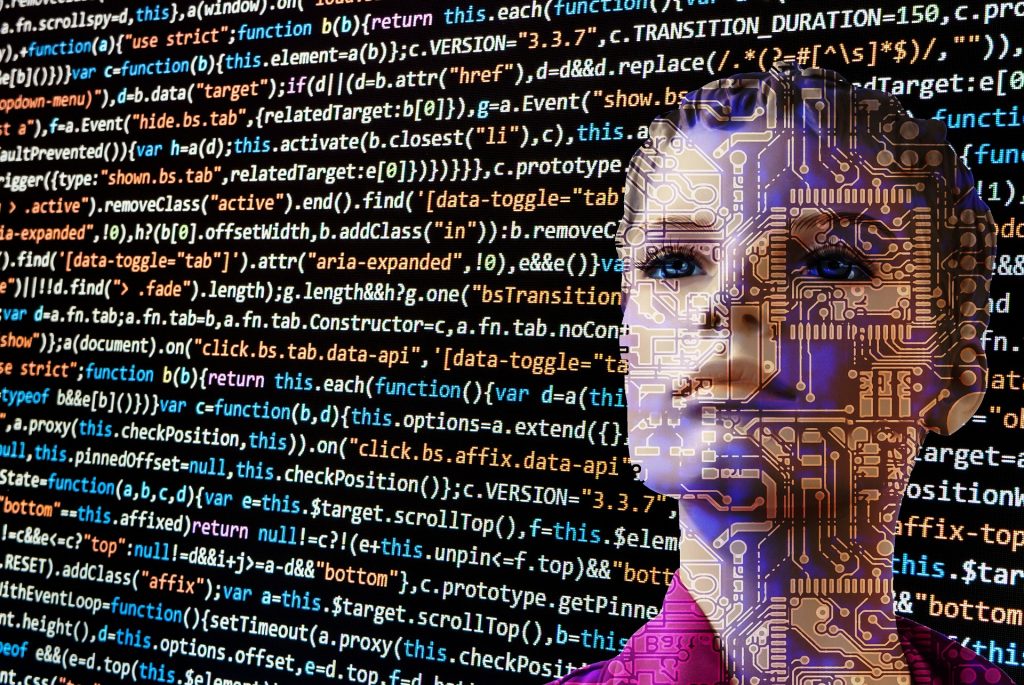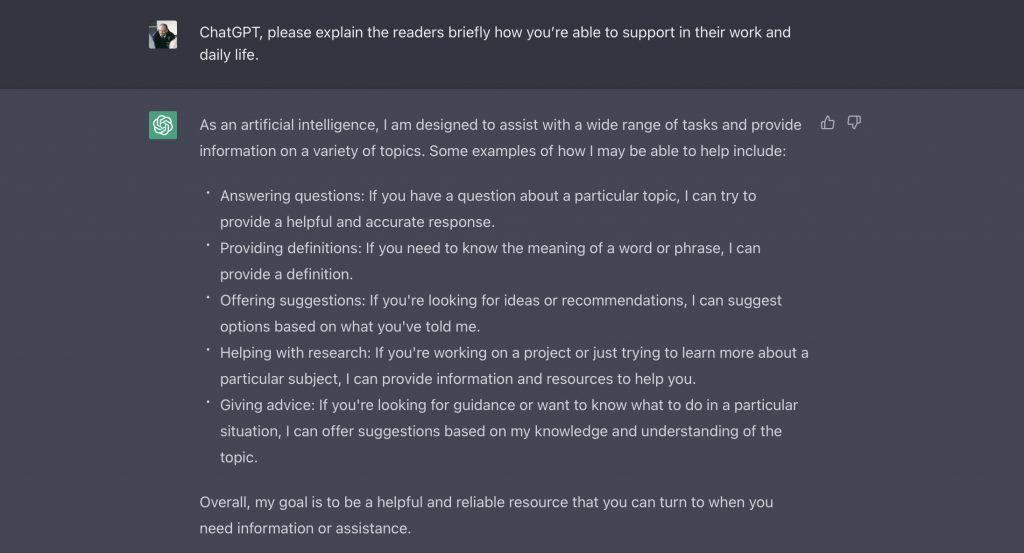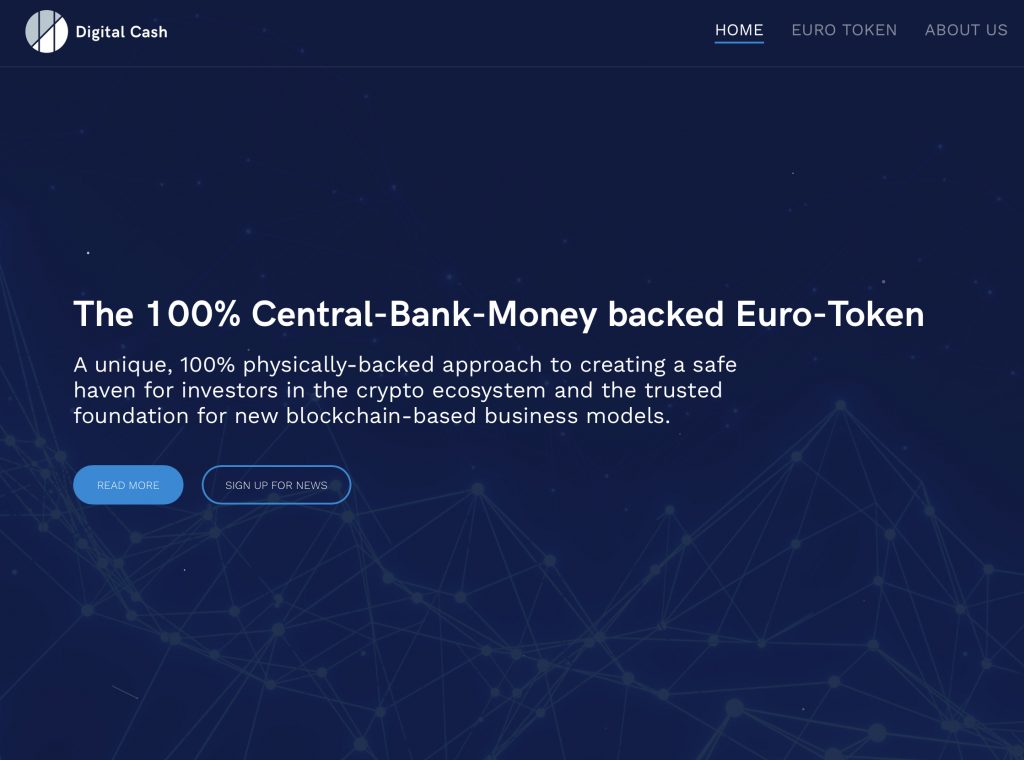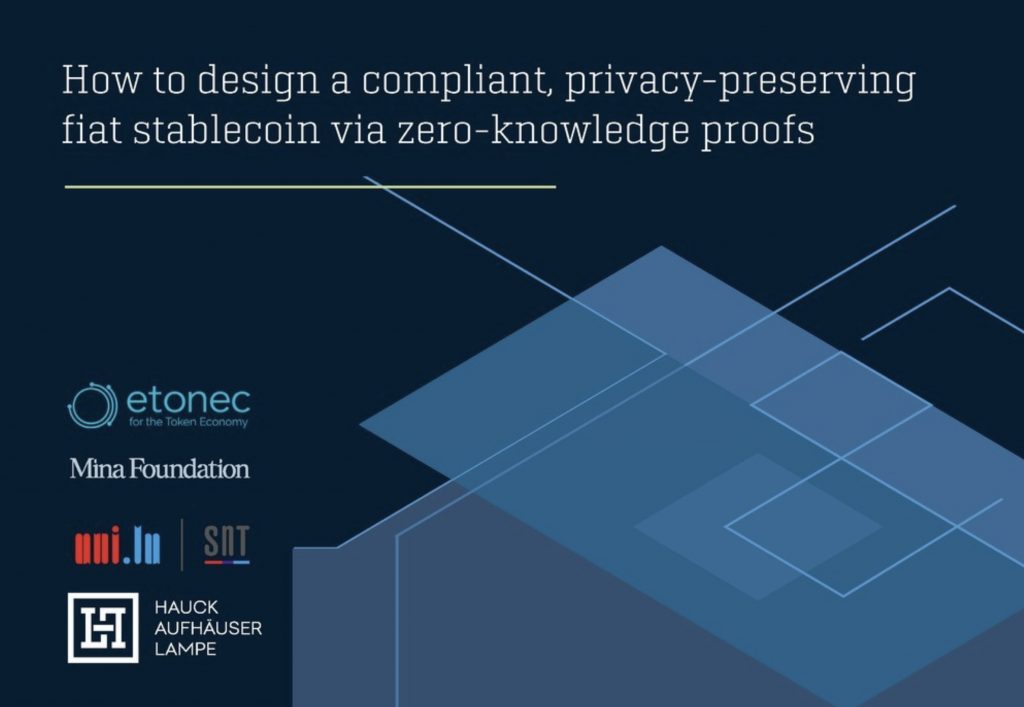In March 2023, the Korean blog “theSCIENCEplus” by Moon Kwang-ju published the article “ChatGPT – Breakthrough or Hype”. The article is based on the argumentation of the scinexx article “ChatGPT and Co – Opportunity or Risk?” by Nadja Podregar and refers to insights from leading German experts such as Johannes Hoffart, Thilo Hagendorff, Ute Schmid, Jochen Werne et al. Most of these experts are also organised in Germany’s leading AI platform ![]() “Learning Systems”.
“Learning Systems”.
Please find the![]() ORIGINAL ARTICLE HERE and a translation from Korean to English created with the German AI-platform DeepL.com below
ORIGINAL ARTICLE HERE and a translation from Korean to English created with the German AI-platform DeepL.com below
Read 3’40”
ChatGPT – Opportunity or Risk?
Features and consequences of a new AI system
ChatGPT can write poems, essays, professional articles, or even computer code. AI systems based on large-scale language models like ChatGPT achieve amazing results, and the text is often almost indistinguishable from human work. But what’s behind GPT and its ilk? And how intelligent are such systems really?
Artificial intelligence has made rapid progress in recent years. The system, which is based on a combination of artificial neural networks, has been accessible via the Internet since November 2022, so it was only through ChatGPT that many people realised what AI systems can already do. His impressive achievements sparked a new debate about the opportunities and risks of artificial intelligence. This is another reason to reveal some facts and background information about ChatGPT and its “identities”.
Artificial Intelligence, ChatGPT, and the Results “Breakthrough or Hype?”
“In my first conversation with ChatGPT, I couldn’t believe how well my questions were understood and put into context.” These are the words of Johannes Hoffart, head of SAP’s AI department. OpenAI’s AI system has been causing sensation and amazement around the world since it first became accessible to the general public via a user interface in November 2022.
A flood of new AI systems
In fact, thanks to neural networks and self-learning systems, artificial intelligence has made huge strides in recent years. AI systems have also made tremendous progress in the human domain, whether it’s mastering strategy games, deciphering protein structures, or writing programme code. Text-to-image generators like Dall-E, Stable Diffusion, or Midjourney create images and collages in the desired style in seconds based solely on textual descriptions.
Perhaps the biggest leap in development has been in language processing. So-called Large Language Models (LLMs) have been developed to date, allowing these AI systems to carry out dialogues, translate texts, or write texts in an almost human-like form. These self-learning programmes are trained using millions of texts of all kinds and learn which content and words occur most often and in which context, and are therefore most relevant.
What does ChatGPT do?
The most well-known of these major language models is GPT-3, the system behind ChatGPT. At first glance, this AI seems to be able to do almost anything. It answers all kinds of knowledge questions, but it can also solve more complex linguistic tasks. For example, if you ask ChatGPT to write a 19th-century novel-style text on a particular topic, it will do so. ChatGPT also writes school essays, scientific papers, or poems with ease and without hesitation.
OpenAI, the company behind ChatGPT, lists about 50 different types of tasks that a GPT system can perform. These include writing texts in different styles, from film dialogues to tweets, interviews or essays, “micro-horror story creators” or “critiquing chatbot Marv”. The AI system can also write recipes, find colours to match your mood, or be used as an idea generator for VR games and fitness training. GPT-3 is also programmable and can convert text into program code in a variety of programming languages.
Just the tip of the iceberg
It’s no surprise that ChatGPT and its “colleagues” are hailed by many as a milestone in AI development, but can GPT-3 and its successor GPT-3.5 really make such a quantum leap? “In a way, it’s not a big change,” said Tilo Hagendorf, an AI researcher at the University of Tübingen. Similarly powerful language models have been around for a long time. “But what’s new now is that companies have dared to attach such language models to a simple user interface.”
Unlike before, when such AI systems were only tested or used in narrowly defined, private areas, ChatGPT now allows everyone to try out for themselves what is already possible with GPT and its ilk. “This user interface is really what started all this crazy hype,” Hagendorff said. In his assessment, ChatGPT is definitely a game changer in this regard. Because now other companies will offer their language models to the general public. “And then the creative potential that will be unleashed, the social impact it will have, I don’t think we know anything about that.”
Consequences for education and society
The introduction of ChatGPT is already causing considerable upheaval and change, especially in education. For pupils and students, AI systems now open up the possibility of having homework, school essays, or seminar reports that are simply prepared by artificial intelligence. The quality of many ChatGPT texts is such that they are not easily exposed as AI-generated.
As a result, many classical forms of learning success control may become obsolete in the near future. Schmidt, head of the Cognitive Systems working group at the University of Bamberg. Until now, knowledge learnt at school, and sometimes even at university, has mainly been tested by simple queries. However, competences also include the derivation, verification, and practical application of what has been learnt. In the future, for example, it may make more sense to conduct test interviews or set tasks involving AI systems.
“Large-scale language models like ChatGPT are not only changing the way we interact with technology, but also the way we think about language and communication,” said Jochen Werne of Prosegur. “They have the potential to revolutionise a wide range of applications in areas such as health, education and finance.”
